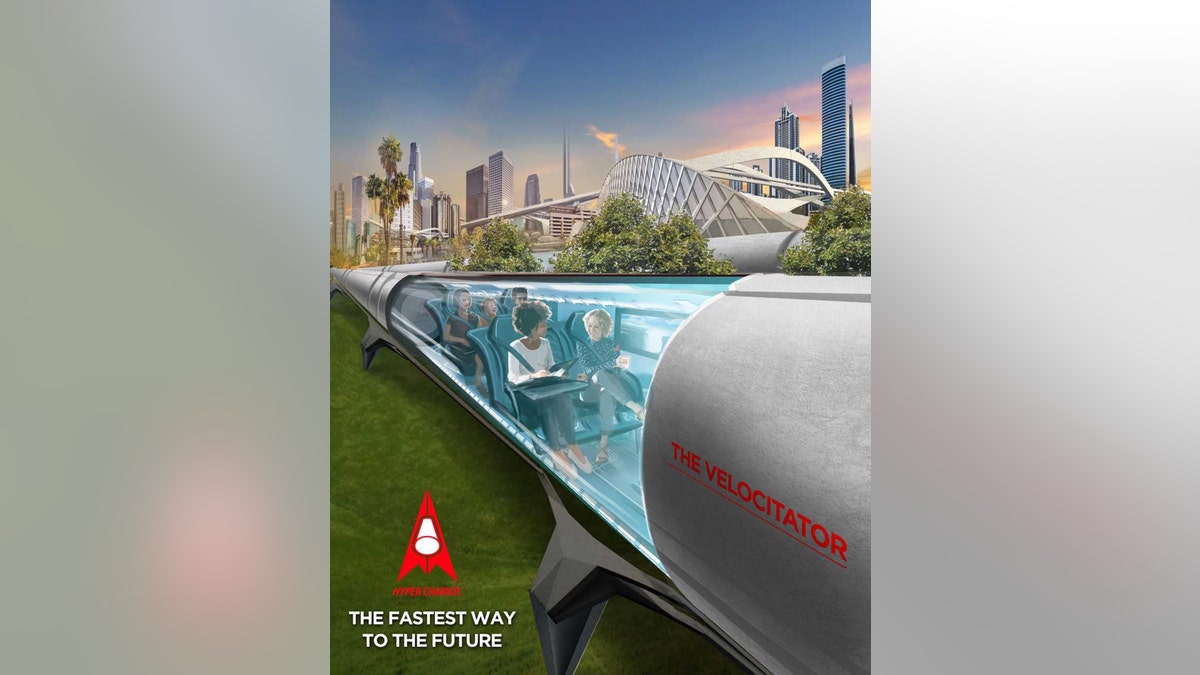
(Credit: Hyper Chariot)
Need to travel 400 miles in eight minutes? Just hop in a Hyper Chariot pod, which uses roller coaster–type technology akin to Elon Musk’s proposed Hyperloop train and will be able to travel up to 4,000 miles per hour.
The car–sized pods (which can hold up to six people) would travel through airless “ultra high performance” concrete tubes using high–grade vacuum technology to travel at five times the speed of sound. The tubes will be lined with solar panels and would use cryogenically-chilled superconductors to create quantum levitation.
Of course, you’ll have to wait over twenty years to ride one. The company claims its pods will be fully operational by 2040 and there are currently plans for a “proof of concept” demonstrator, called “The Velocitator," costing between $75 million and $100 million, to be unveiled in 2021.
The announcement comes a few years after Elon Musk announced the similar Hyperloop concept. According to Hyper Chariot, their train will be lighter, faster and more efficient than the Hyperloop. The Hyper Chariot would use smaller, 400–pound pods for transport, while the Hyperloop weighs 20 tons and is more like a bus. Hyper Chariots pods would travel through concrete tubes and will interchange like cars on a freeway network, while the Hyperloop would travel through a steel tube on a single track. Hyper Chariot also plans for their tubes to be smaller at about five feet wide, whereas Hyperloop’s tubes are the width of a street.
The company also isn’t nervous if the Hyperloop rolls out first.
“Who sends something in a tube first isn’t necessarily the winner here,” Hyper Chariot co–founder Joanna Garzilli told Fox News. “It’s about who can best commercialize evacuated tube transport in a way that is personalized, cheap and useful for your average blue-collar worker. We want to be the first to make our investors money back off of real revenue.”
Based in Santa Monica, the company plans on operating world–wide. They are currently scouting locations for their three–mile, 400mph Velocitator demonstration in various places around the country (including Las Vegas and Medley, Florida) and hope to have a transport system in the States.
“The goal here is to build in every country and every state to the same diameter tube and use the same patented maglev [magnetic levitation] interchange system so we can connect the whole world at much higher speeds at a later date,” Garzilli said.
Engineer and USC professor James Moore isn’t so sure such a transport system could work in the U.S. due to the high cost, which Hyper Chariot estimates to be $25 million per mile. By comparison, Musk’s Hyperloop cost is $64 million per mile.
“I like science as much as the next engineer, and emotionally I want maglev trains to be relevant,” Dr. Moore told Fox News. “However, they are not relevant in North America because conventional passenger trains are not all that relevant, largely because of the cost of the infrastructure per seat mile. Conventional high–speed rail is even worse in this respect, and the increase in travel demand from a higher level of service won’t recover the cost of the resources needed to offer conventional high speed service.”
Moore was also dubious that a terrestrial transportation system offering speeds of 4,000 miles per hour will exist 22 years from now. He also believes such a system would offer no survivability if something were to go wrong, and would effectively have to be error proof.
“An accident involving a vehicle moving at 4000 mph would not leave much behind to repair, but focusing on a 4000 mph accident is overkill,” he said. “We can’t afford to build high volume evacuated tube systems reliable enough to accommodate terrestrial speeds of [even] 400mph, [and] I don’t expect we will be able to 22 years from now.”
Hyper Chariot stated that human error would be eliminated because everything would be automated via computer. The company also plans on only using the pods to transport cargo for at least a year until people are allowed on.
“We’re focused on hiring the top engineers in the world and recognize that no customers will be entering 1,000mph+ tube lines before everything has been rigorously tested and insured for use,” Garzilli explained. “Our technology eliminates close to 99% of the reasons that we have accidents today. There are no moving parts so we’re dramatically reducing chance of mechanical failure.”
And as to whether or not the Hyper Chariot transports will be rolling out 22 years from now, Garzilli said “You don’t get there unless you set the goal.”
